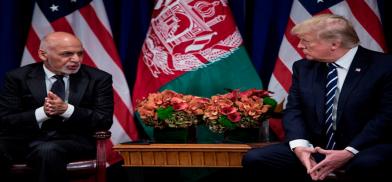US-Taliban talks: Peace is still elusive
The present peace accord is fragile as there are several forces which are against the peace, and they may try to disrupt the agreement, writes Jai Kumar Verma for South Asia Monitor

A short-term peace deal between the United States and the Taliban on February 21 may result in the signing of a permanent accord on February 29, 2020. The peace agreement would end the longest US war, during which 3,500 US and NATO soldiers have been killed and the US has spent over $900 billion.
The deal, involving a truce in hostilities, will pave the way for the end of the 18-year long, US-led war in Afghanistan, in which thousands of Afghans have died and millions have been displaced. It will also be crucial for US President Donald Trump as it will allow him to fulfil his major campaign promise, to bring US troops back from war-torn Afghanistan. It will be a successful culmination of American Special Envoy Zalmay Mamozy Khalilzad’s tireless efforts for Afghan Reconciliation since September 2018.
The February 21 announcement of a truce was important as it was the result of prolonged negotiations with the Taliban. It also indicates that both sides are tired and want an amicable settlement. If the deal fructifies, then intra-Afghan peace talks will take place, and a new government would be constituted in Kabul. The Taliban will not permit any terrorist outfit in Afghanistan to carry out terrorist activity and all foreign troops, including US troops, would withdraw from Afghanistan.
Trump has taken a big risk in this US election year. If the truce holds, it will boost his re-election bid. However, if the deal fails, his opponents would blame Trump for being ready to sacrifice America’s security for political gain. The peace accord would give the Taliban an international legitimacy which they lacked when they ruled the country and gave shelter to Osama Bin Laden in 2001.
US Secretary of State Mike Pompeo said the peace accord would be signed in Doha, Qatar by Khalilzad on February 29, while the Taliban would ensure that US and allied forces would not be attacked. Pompeo also said that “Intra-Afghan negotiations will start soon thereafter and will build on this fundamental step to deliver a comprehensive and permanent ceasefire and the future political road map for Afghanistan.” The Taliban, in a statement, said the accord will bring peace and the withdrawal of foreign troops from Afghanistan. They have issued instructions to their commanding officers to halt attacks on Afghan and foreign troops from February 22 to 29. The Taliban have also said that nobody will be allowed to use Afghan territory against the security of others and the country will live peacefully under Islamic law.
The present peace accord is fragile as there are several forces that are against the peace and they may try to disrupt the agreement. Several factions of the Taliban and other groups have not shown any interest in peace talks and may continue attacking US troops. The attitude of the Ashraf Ghani government is also not clear. Ghani’s opponents have refused to accept the Afghan election commission decision declaring his victory in the presidential poll. The Taliban have refused earlier to negotiate with the Ghani government, which they consider a ‘puppet’ government. Now the Taliban has agreed that Afghan government representatives can participate as ordinary Afghans and not as government officials. Under the peace accord, Afghan forces have to release about 5,000 Taliban prisoners first. However, the Afghan government has not shown any inclination yet to release these prisoners.
Pakistan, which assisted the Taliban and helped the US in negotiations, has overtly welcomed the treaty, but will not allow it to succeed until the US helps Islamabad to come out of the Financial Action Task Force’s (FATF) ‘grey list.’ The venue of future talks has also not been announced, although Germany and Norway have offered to host the talks.
Both the US-led military alliance and the Afghan National Defence and Security Forces (ANDSF) have reserved the right to attack terrorist outfits working under Islamic State and al-Qaeda. The US has not revealed whether it will withdraw all its forces, or keep some troops in Afghanistan. At present, the US-led military alliance has about 16,000 soldiers in the country. But the Taliban has announced that all foreign forces would leave Afghanistan.
Both the US and Taliban have agreed to chalk out a 135-day timetable under which the US will withdraw its forces within three to five years, while the Taliban would reduce attacks on US troops and ANSDF. However, it will be difficult for the Taliban to control all Taliban factions and prevent terrorist activity. Many Taliban commanders are not agreeable to allowing the retention of US counter-terrorism forces in the country. The role of the Central Intelligence Agency (CIA) is also important, as it has been financing several outfits. These groups would also try to sabotage a peace agreement. If peace talks do succeed, then the fate of about three million Afghan refugees living in Iran and Pakistan has to be decided.
There are some secret clauses in the agreement which may also cause trouble at a later date. Khalilzad is not a straightforward negotiator and he may promise several things which are not possible to fulfil. President Abdul Ghani does not trust him and, as he won the presidential election, he may prefer to negotiate with different Taliban factions to bring peace and may even sabotage the present agreement. Given the hurdles, it faces, only time will determine whether or not the accord is a success and peace is restored in Afghanistan.
(The author is a New Delhi-based strategic analyst)









Post a Comment